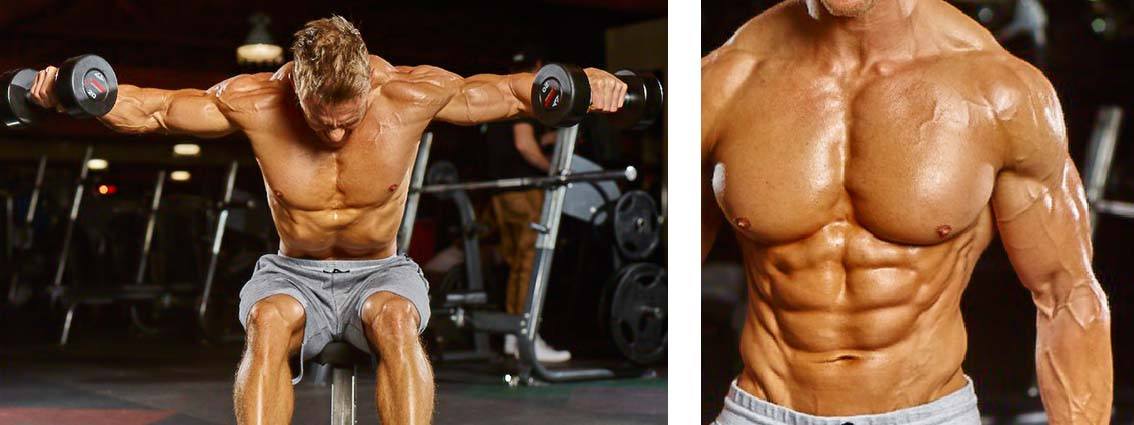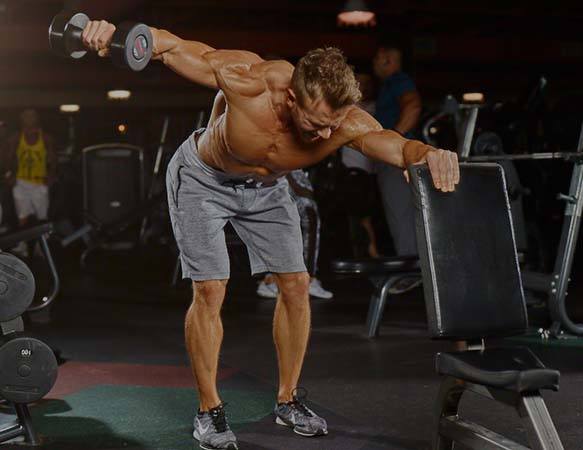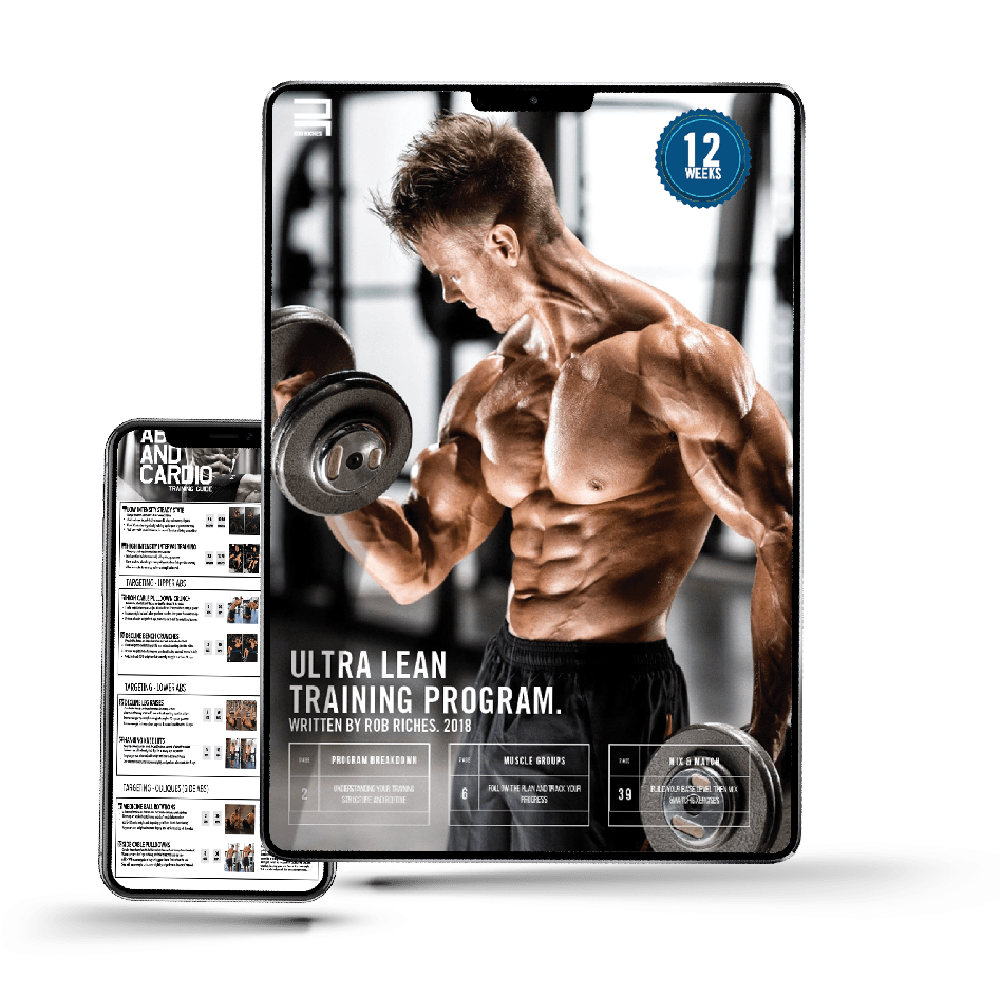Well-developed shoulders will enhance your physique more than any other muscle group
June 15, 2018
There’s just something quite rudimentary and primordial about lifting something heavy, especially when pressing it overhead. It’s like the ultimate feat of strength.
If you aren’t already committing to using free-weights for the majority of your training, I encourage you to start doing so. Lifting free-weights often require greater muscle involvement than a machine does, and can really benefit you by helping to strengthen many of the ancillary and secondary muscles involved in such exercises.

← Have You Seen This?
In need of an extra boost to your training? Check out my Ultra Lean Nutrition Manual, and Ultra Lean Training Program
First Form, Then Weight
Lifting a heavy weight may look to be impressive, but it will only truly be beneficial if you’re using correct form and technique, and the right muscles are being properly worked. I’ll be the first to admit that it’s all-to-easy to fall into the trap of simply chasing weights, and trying to continue to add more and weight to an exercise. There’s a fine line between how much weight you can move, and how effective it is for the muscle being trained. In recent years, I’ve taken a step back from lifting the heaviest weights I can, and find myself now working with about 75-80%, and feeling much better within my workouts.
By focusing first and foremost on your technique with each and every exercise, and remaining consciously aware during each set and rep, you can really tune yourself into how the muscle is feeling and being worked. If you were a formula one racing driver, driving your car at extremely high speeds around a track, you’re going to be paying very close attention to every detail so that you can respond quickly and keep the car on the track performing smoothly and efficiently. Why should your workouts be any different? You wouldn’t want to be in a formula one car at high speeds listening to music, chatting with your friend, and checking your phone after every corner?
Alternate Standing & Seated
Have you ever performed a shoulder press or raise standing up, and then compare it to how it feels when performed in a seated position? It gives you a very different feeling, and often requires a drop in weight due it being a stricter movement. This may not do much for your ego (lowering the weight), but it can help greatly with directly working the target muscles.
I personally like to alternate any standing exercises with it’s seated variation in the following workout, and switch up my routines so that on some workouts I’ll have several standing and several seated exercises, and the next time I perform this same routine, I’ll change one or two movements from seated to standing, and vice versa.
It doesn’t always have to be a complete reversal from the previous workout, but just by changing a few, it allows me to check my form and focus on executing each rep as precisely as I can whilst flexing my deltoids hard at the top of each rep. The next time I perform this same exercise standing, I might simply try to push heavier weights and increase my previous lift by just a few pounds/kg heavier (or by 1-2 reps extra).

The Basics & Beyond
Focus on getting a few months of solid groundwork behind you with such workouts as the one shown below. Practice your technique until it’s an example to others. Commit to lifting as heavy as you can for the desired reps without breaking form. Remain aware during each and every rep that the target muscle(s) is being worked, and is being worked with intensity and a commitment to contracting and squeezing all the fibers.
Only once you’ve mastered the basics should you start to make use of the various shocking principles to further your training. The first that I would recommend would be changing how such movements are performed: try slowing the pace as you lower the weight, or performing half the set with a full range of motion, followed by only the upper or lower range of motion. Not every working set needs to include a shocking principle or change from its standard execution. Don’t allow yourself to deviate too much from the straight-sets, heavy lifting, that will pave the foundation for your strength and growth.
Unilateral Exercises
Try every so often to perform many of these exercises as uni-lateral movements. From single arm shoulder presses with a dumbbell (both standing and seated), to standing and bent side lateral raises – using a dumbbell or cable, to isolate and target one side at a time. This can often be a welcomed break for the body as well as highlight any weaknesses you may have within your left or right side.

Exercise 1
SEATED DUMBBELL PRESS
3 sets of 20-15 reps (warm up sets)
Exercise 2
CLEAN & PRESS
4 sets of 10-8 reps (Explosive movement)
Exercise 3
REAR DELT DUMBBELL FLYS
4 sets of 12-10 reps (alternate with rear cable flys each week)
Exercise 4
SEATED MILITARY PRESS
3 sets of 12-10 reps
Exercise 5
STANDING LATERAL RAISES
3 sets of 15-10 reps



